In this review of the Trijicon RCR, Dr. Will Dabbs gets hands on with the new closed emitter style red dot sight. The RCR is compatible with a wide range of firearms, and this evaluation was completed with the Springfield Armory Echelon. Trijicon provided the author with a loaner RCR for this review.
The Trijicon RCR is a ruggedized closed emitter red dot sight designed for use on full-sized handguns and on carbines. Enclosed within a robust 7075-T6 aluminum chassis, the RCR is arguably the toughest miniature electronic gunsight on the market. A multi-platform mounting system makes melding the RCR with a superlative pistol like the Springfield Armory Echelon super easy. [Don’t miss Massad Ayoob’s Springfield Echelon 9mm review for additional information about this amazing pistol.]
Nowadays, we take red dot sights for granted. They are background clutter atop pistols employed by military, law enforcement and civilian users. Such an optic enhances precision and speeds up engagement time. For those of us at a certain age, it also helps compensate for high-mileage eyes. Be sure to read about the best pistol sights for old eyes written by Justin Opinion.
How we got here is an interesting tale indeed.
Welcome to the Jungle
Compared to World Wars I and II, Vietnam was a grinding, protracted bloodletting. The United States lost 116,516 dead during 19 months of combat in WWI. A further 405,399 Americans fell in four years during WWII. By contrast, Vietnam claimed 58,220 G.I.’s over the course of a decade. However, while the horror in Vietnam might be considered a mid-density slaughter by WWII standards, it saw some utterly transformational changes in the fundamental nature of warfare.
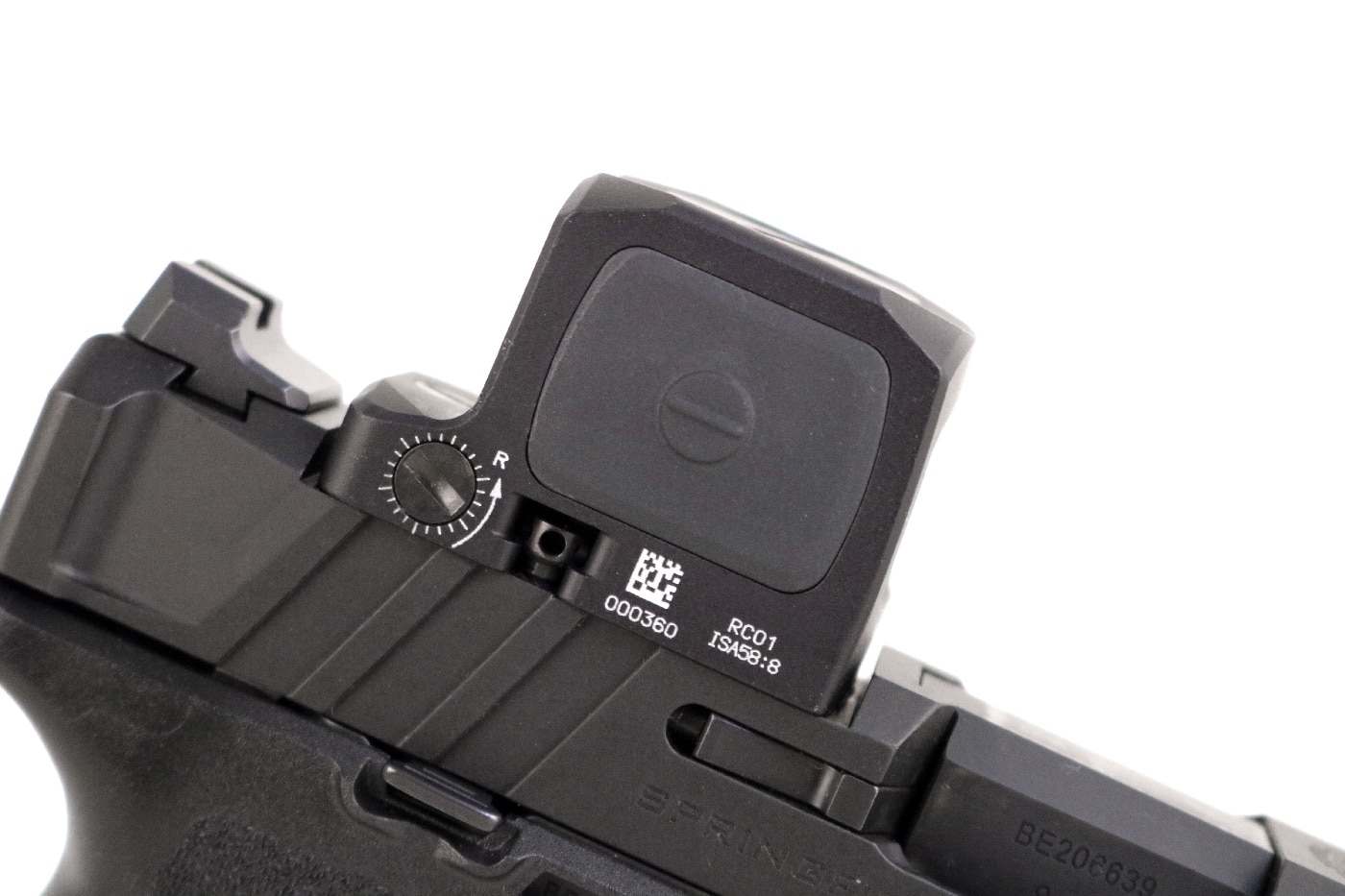
Vietnam was our first serious jet war. It also saw the advent of guided weapons and night vision systems on a scale without precedent. In addition, toward the very end of the war, American special operators began pioneering the sorts of tactical rifle accessories that have become commonplace today. One of the more revolutionary examples was low-light tactical gunsights on individual combat rifles. All that really began with the Son Tay raid.
Details
The technical appellation was Operation Ivory Coast. Staged in November of 1970, the objective was to rescue American POWs held in the North Vietnamese prison camp at Son Tay. The shooters were drawn from American Special Forces operators with extensive combat experience in theater.
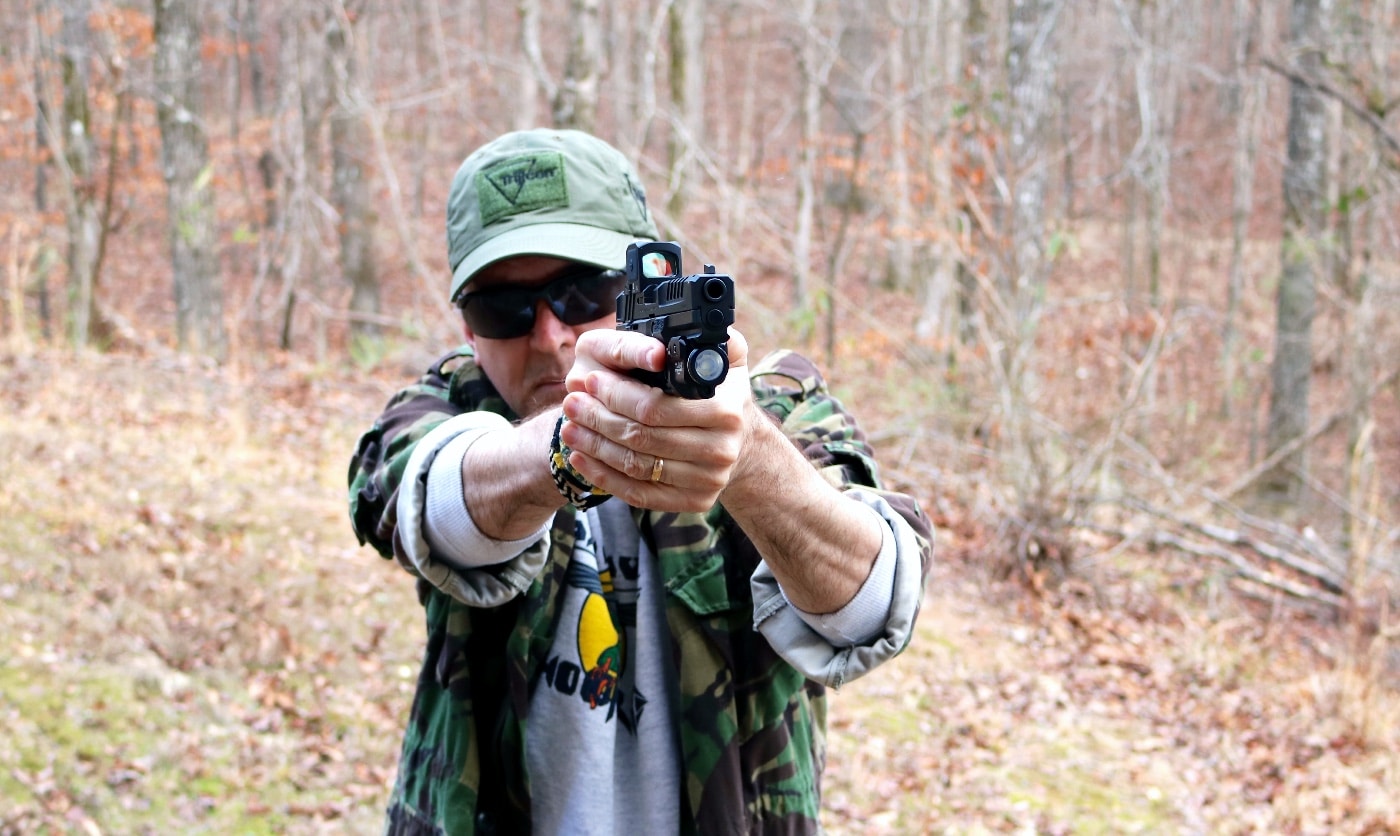
The raid was ultimately a flawlessly executed failure. Despite there being some 5,000 NVA troops stationed within five miles of the camp, the assault force successfully got in and got out just as planned. It was simply that the POWs had been moved to a different facility immediately prior to the operation. However, the U.S. military still learned a great deal from the experience.
For starters, Son Tay represented a whole lot of jointness. Troops from various services were forced to work together to synergistically integrate their disparate skills and capabilities. That spirit thrives in the Joint Special Operations Command today. On a micro level, the Green Berets who did the shooting optimized their GAU-5/5A carbines, M-60 machine gun, and M-79 grenade launchers for nighttime operations.
In the case of the M-79’s, that meant luminous tape affixed to the ladder sights to establish range holdovers in the dark. For the GAU-5A/A carbines carried by the primary shooters, many of them were equipped with the revolutionary Singlepoint OEG (Occluded Eye Gunsight). Developed by the Normark Corporation, these Singlepoint OEGs had first been discovered in the pages of a gun magazine. Uncle Sam bought 49 examples for $49.95 apiece. The Son Tay operators had to reinforce the mounts with electrical tape to ensure they were adequately robust.
The Singlepoint OEGs were lyrically successful. By the time the American assault force egressed they had killed some 40 NVA guards while suffering but a single friendly injury. A large part of that success was attributable to the rarefied low-level gear the assaulters had at their disposal.
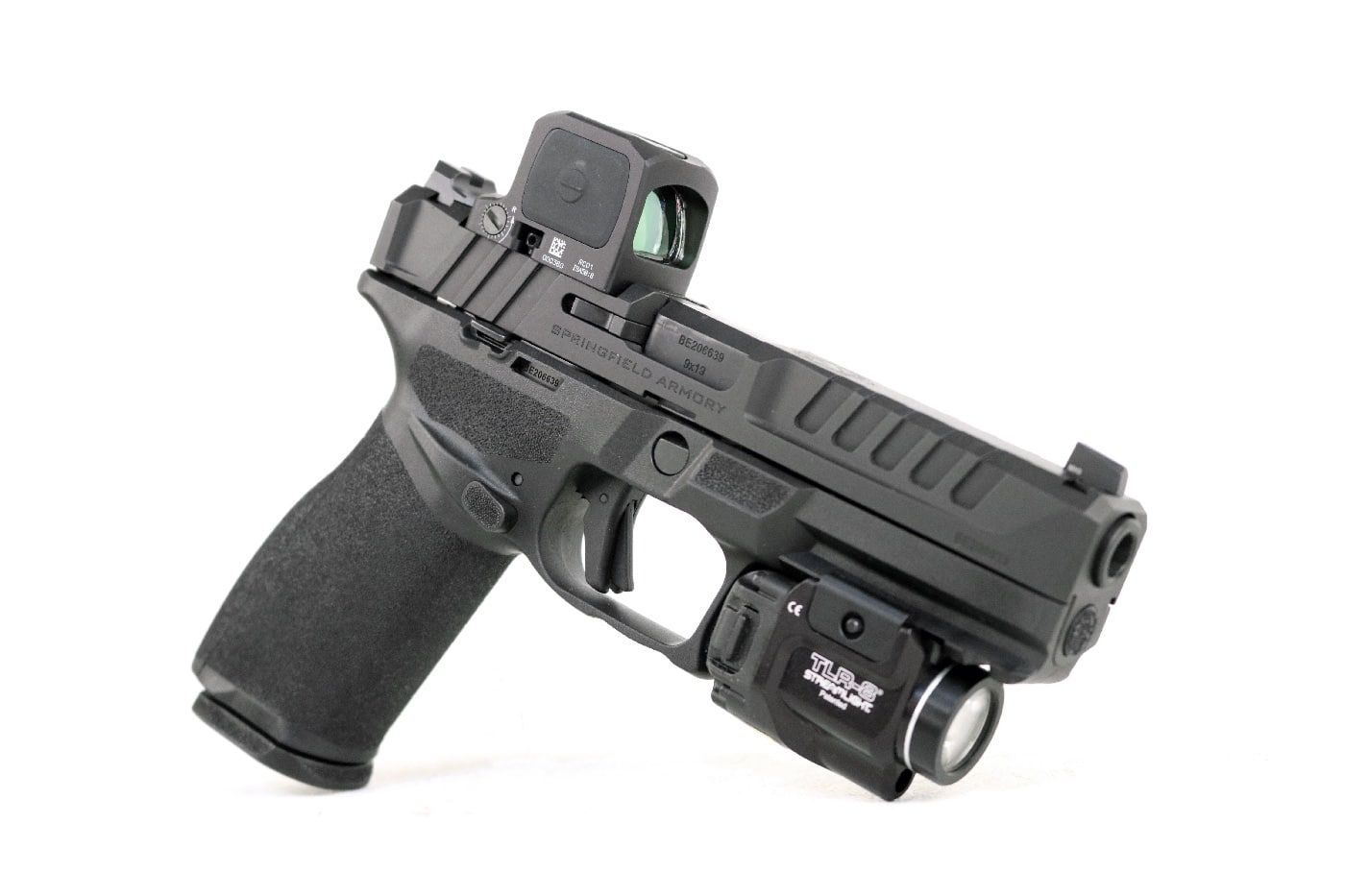
Now fast forward half a century, and the landscape is unrecognizable from what it was back at the height of the Vietnam War. If you want to sit at the cool kids’ table at your local range you’d best have something electronic and sparkly mounted atop your favorite tactical gat. Modern red dot optics run the gamut from dirt cheap to rarefied with everything in between. The new Trijicon RCR reflects the current state of the art.
Trijicon RCR Details
The RCR is the ultimate result of generations of mechanical evolution. Patented capstan screws allow easy and secure mounting without a separate mounting plate. The RCR uses a standard RMR mounting footprint. This bit is actually really cool. To mount the sight, you get the special screws started and then lock them down by twisting them from the side using the shaft of an included Allen wrench.
The battery mounts from the top, so you can replace it without dismounting the optic from the weapon or upsetting your zero. A standard CR2032 button cell can be expected to run for six years at a mid-level power setting, so you obviously won’t have to fret with that very often. The sight is designed to co-witness with your irons.
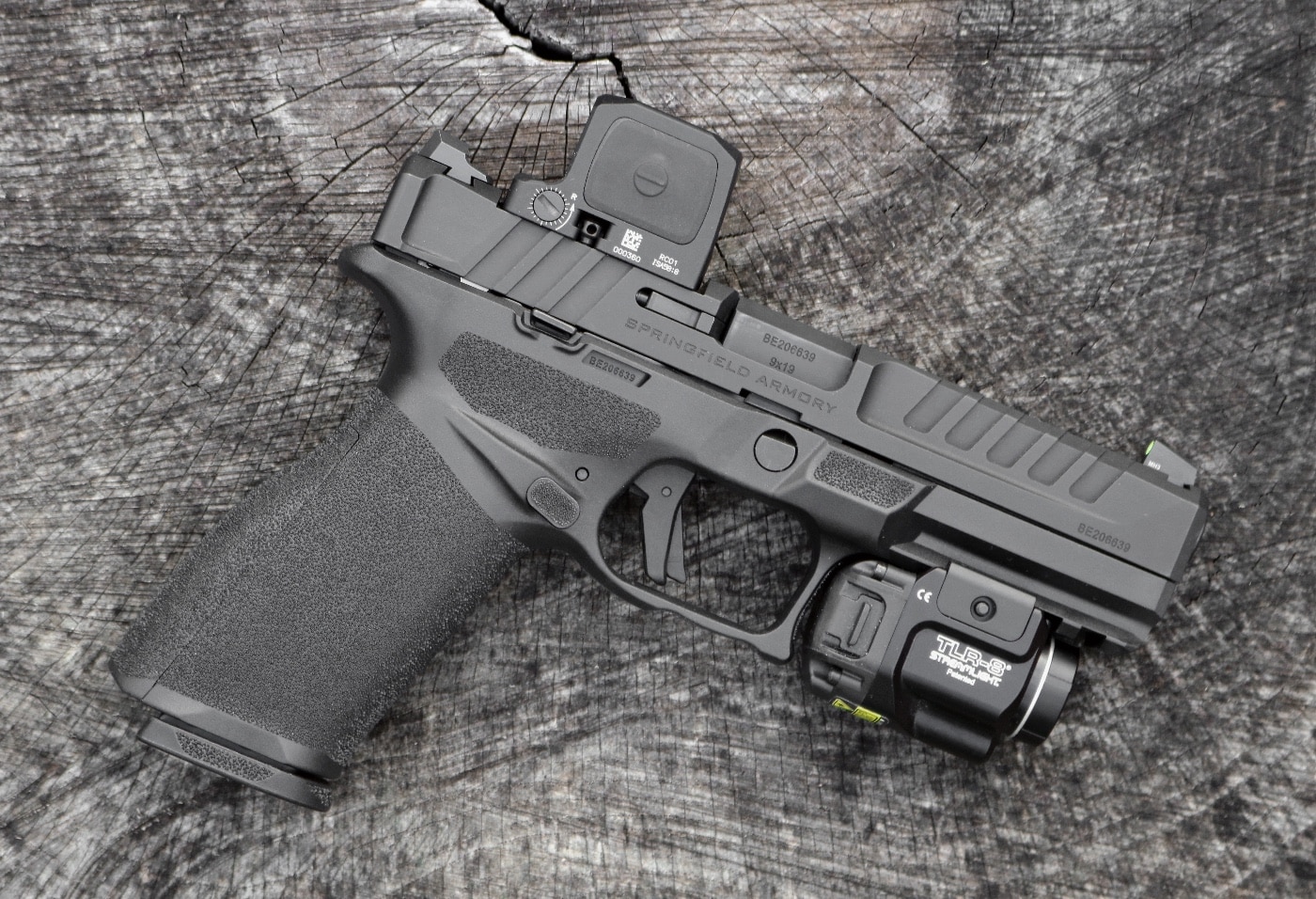
Elevation and windage adjustments require nothing more complex than a small coin or cartridge rim. External controls and internal electronics are designed to survive in the harshest of environments. The sight is certified down to 65 feet underwater and temperatures ranging from -40 to 140 degrees F.
Illumination settings are pushbutton adjustable through 10 levels of brightness to include three that are night vision compatible. The reticle is a standard 3.5-MOA red dot. The all-up weight of the sight is less than two ounces. On a superlative chassis like the Echelon, expect no degradation to reliability or performance.
Practicalities of the Enclosed Emitter Red Dot Sight
If you can set up a computer printer, you are overqualified to mount the Trijicon RCR to your Springfield Armory Echelon. Since the RCR features the RMR footprint, it can directly mount to the slide of the Echelon due to the pistol’s Variable Interface System optics mount.
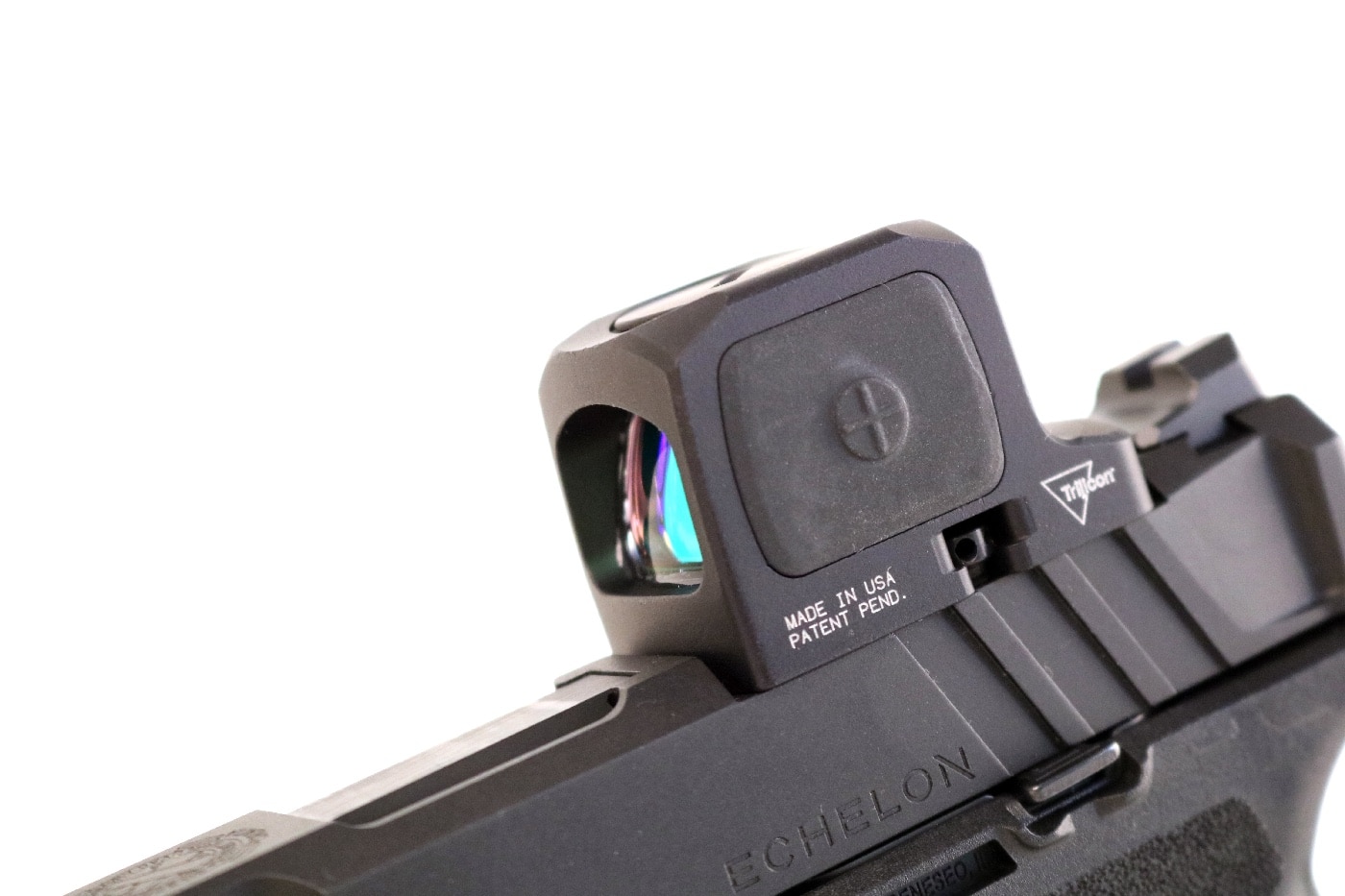
Zeroing the sight can be done in your living room without firing a shot. Point the gun in a safe direction and adjust the dot until it overlies your iron sights. As the dot co-witnesses, there is no optical offset.
The RCR works by projecting a red dot aiming point onto a spherical mirror. This mirror sports a partially silvered multilayer dielectric dichroic coating that only reflects the red spectrum while allowing most other wavelengths to pass through. With both eyes open the dot hovers over your target no matter the circumstances or range. The RCR’s generous field of view makes dot acquisition fast and easy, even under pressure.
That really is about all there is to it. Operation is intuitive and stupid-proof. Practice with the rig until the dot pops up into your field of view of its own accord and you are set to go. The end result will cut your times on the range and enhance your survival everywhere else.
With an MSRP of $849, the new RCR is hardly cheap. However, Trijicon is a foundational name in modern combat optics. An Army buddy with whom I was visiting recently said they used a couple of different optics in garrison, but standardized with Trijicon ACOGs when they deployed downrange. Trijicon just makes consistently awesome stuff. Lightweight, precise, and tougher than woodpecker lips, the Trijicon RCR represents the cutting edge of combat optics.
Editor’s Note: Please be sure to check out The Armory Life Forum, where you can comment about our daily articles, as well as just talk guns and gear. Click the “Go To Forum Thread” link below to jump in and discuss this article and much more!
Read the full article here



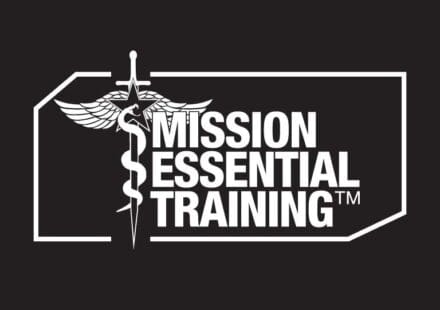
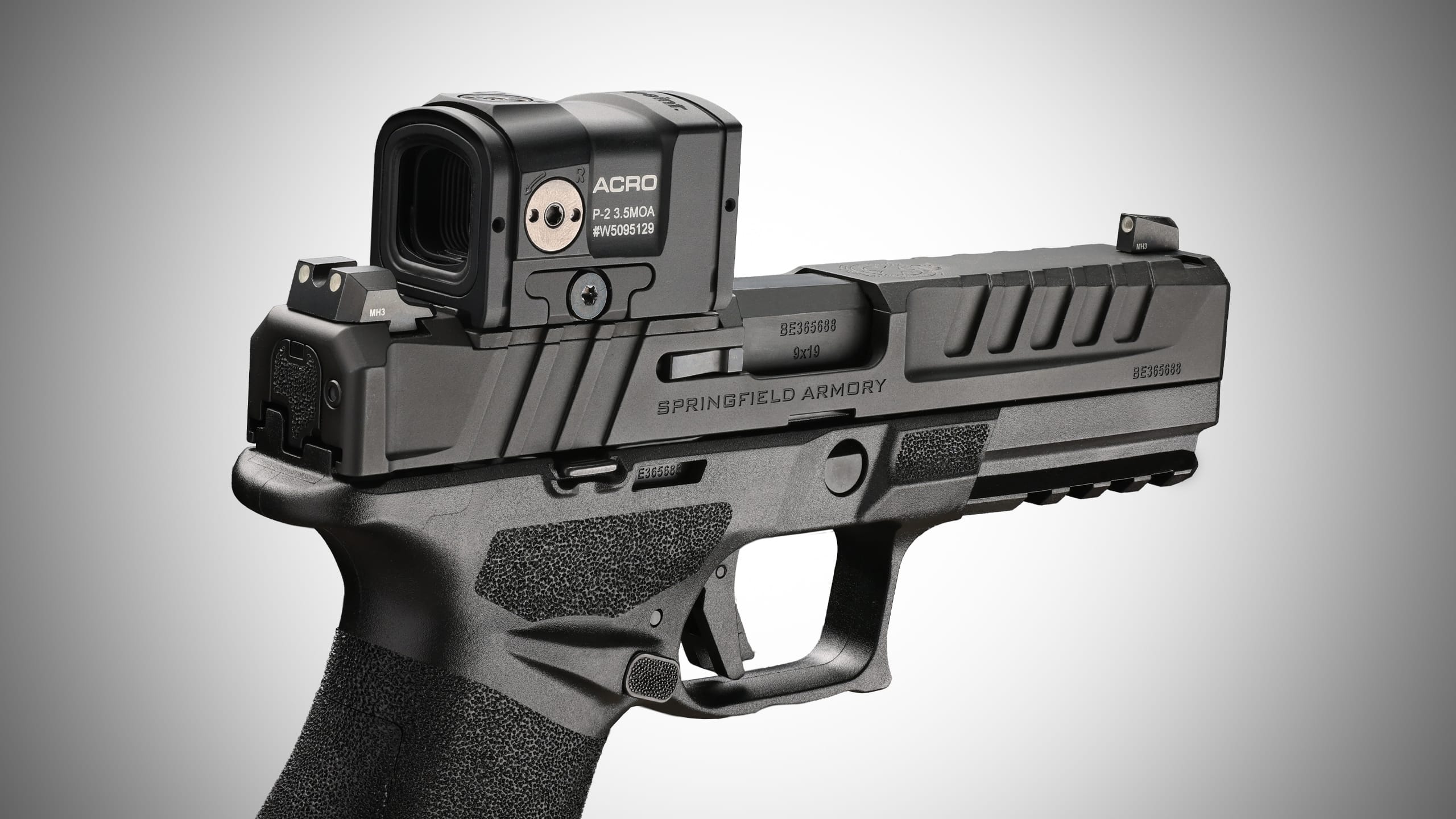


Leave a Reply